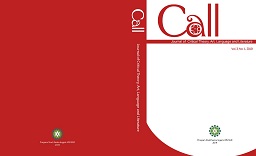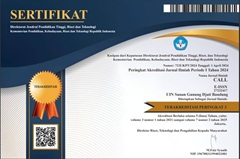The Cavern Concept of Main Character in Beauty and The Beast
DOI:
https://doi.org/10.15575/call.v2i1.8764Abstract
Literature is a fiction in which the author has freedom in expressing their imagination. In viewing a film, the audience can represent the film according to what they see. This can be seen from the story line, moral massage, character, and so on. The character in a literary work elevates the aesthetic value, any character can be described by the author. It can be contained in a literary works, because it is an idea or imagination of someone to created an aesthetic purposes. The ugliness in the character it is called as grotesque. The grotesque character cause their alienation from his society, because the structured of body in ugly or odd. Researcher look for data relating to the question of the problem, how the of Cavern Concept in Beauty and The Beast. In this study, researcher used descriptive methods according to Suryana (2010:20) “metode yang digunakan untuk mencari unsur-unsur, ciri-ciri, sifat-sifat suatu fenomena. Metode ini dimulai dengan mengumpulkan data, menganalisis data dan menginterpretasikannya.†These conflicts to revealing the cavern concept includes: (1) condemnation of a Prince become an ugly figure. (2) transformation into to a Beast. (3) character’s emotional changes, because he as a Beast. (4) beast’s alienation from his environment or his world.
Downloads
Published
Issue
Section
Citation Check
License
Authors who publish in CALL agree to the following terms:
- Authors retain copyright and grant the journal right of first publication with the work simultaneously licensed under Attribution-ShareAlike 4.0 International (CC BY-SA 4.0) License that allows others to share the work with an acknowledgment of the work's authorship and initial publication in this journal.
- Authors are able to enter into separate, additional contractual arrangements for the non-exclusive distribution of the journal's published version of the work (e.g., post it to an institutional repository or publish it in a book), with an acknowledgment of its initial publication in this journal.
- Authors are permitted and encouraged to post their work online (e.g., in institutional repositories or on their website) prior to and during the submission process, as it can lead to productive exchanges, as well as earlier and greater citation of published work (See The Effect of Open Access).




